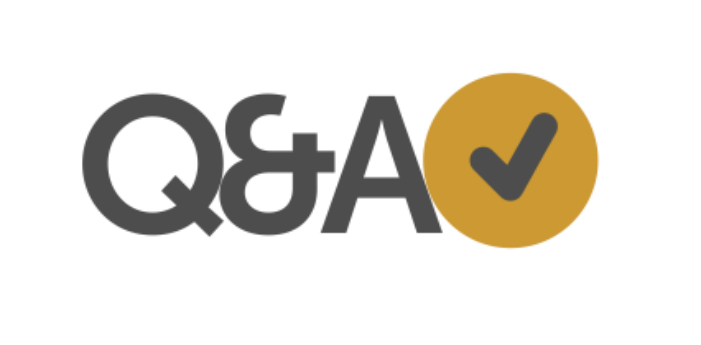Getting ready for a product manager job in Nigeria can be both exciting and challenging. As you get ready for interviews, being prepared for the questions is super important. This guide is here to help!
We’ll go through 20 common questions you might be asked in a Product Manager interview in Nigeria. Whether you’re just starting out or have lots of experience, this guide is here to make the interview process clearer.
We want to share tips and tricks to help you do your best in your journey to becoming a Product Manager in Nigeria.
So, let’s jump into these questions, break down the details, and get you ready to tackle your interview with confidence!
Table of contents
- What does a product manager do, and why is the role crucial for a company?
- Why Is the Role Crucial for a Company?
- What skills do you need for a product manager interview?
- 20 Frequently Asked Product Manager Interview Questions
- Can you walk us through your product management process from ideation to launch?
- How do you prioritize features on a product roadmap?
- How do you handle conflicting opinions from different teams, such as design, engineering, and marketing?
- How do you gather and integrate customer feedback into the product development process?
- Can you share an example of a successful product launch you’ve led?
- How do you stay informed about industry trends and apply them to your product strategy?
- How do you handle a product that is not meeting its performance goals?
- How do you balance short-term goals with long-term product vision?
- How do you approach the development of innovative features or improvements?
- Can you describe a time when you had to pivot a product strategy due to unforeseen circumstances?
- How do you ensure that your product meets the needs of diverse customer segments?
- Can you share a challenging decision you had to make during a product development process and how you approached it?
- How do you keep your team motivated during challenging phases of a product lifecycle?
- Describe a time when you had to manage a product with limited resources. How did you prioritize and optimize within constraints?
- How do you handle competing priorities when managing multiple products or features simultaneously?
- Can you share an experience where you successfully turned negative customer feedback into an opportunity for product improvement?
- How do you stay informed about the competitive landscape and adjust your product strategy accordingly?
- How do you manage the transition from a product’s initial launch to its growth phase?
- How do you approach collaboration with development teams, especially in an Agile environment?
- How do you measure the success of a product, and what key performance indicators (KPIs) do you prioritize?
- Conclusion
- FAQs
- References
- Recommendations
What does a product manager do, and why is the role crucial for a company?
A product manager is like the captain of a ship steering through the vast sea of making products. They have a big job that involves looking after the whole life of a product. Right from the start when they’re thinking up ideas to the end when the product is out there and beyond, product managers play a huge role in making sure everything goes the right way.
Here are some key aspects of a product manager’s responsibilities:
- Market Research: They conduct thorough market research to understand customer needs, industry trends, and potential competitors.
- Roadmap Planning: Product managers create a strategic roadmap for the product, outlining its features, enhancements, and timeline.
- Cross-Functional Collaboration: They collaborate with various teams, including design, engineering, marketing, and sales, ensuring everyone is on the same page and working towards the common goal.
- Prioritization: Product managers prioritize features and functionalities based on factors such as customer feedback, business objectives, and market demands.
- Decision-Making: They make critical decisions throughout the product development process, weighing the trade-offs and ensuring that the final product aligns with the company’s overall strategy.
- Feedback Integration: Gathering and incorporating feedback from customers and internal teams is a crucial part of the role. Product managers use this feedback to iterate and improve the product.
- Communication: Effective communication is key. Product managers need to articulate the product vision, goals, and progress to various stakeholders, both within and outside the company.
You should read: 20 Frequently Asked Credit Officer Interview Questions
Why Is the Role Crucial for a Company?
The role of a product manager is pivotal for several reasons:
- Market Success: A well-managed product can be a game-changer for a company, leading to increased market share, revenue, and customer satisfaction.
- Alignment of Teams: Product managers ensure that all teams are working cohesively towards a shared vision, minimizing conflicts and enhancing productivity.
- Customer-Centric Approach: By focusing on customer needs and preferences, product managers help companies create products that resonate with their target audience.
- Innovation: The product manager is at the forefront of driving innovation within a company. They explore new ideas, technologies, and approaches to keep the product competitive.
- Adaptability: In a dynamic business environment, adaptability is crucial. Product managers navigate changes in the market, customer preferences, and technology to keep the product and company relevant.
A skilled product manager is a linchpin that holds various elements of a company together, ensuring that the products developed align with both customer expectations and business objectives. Their strategic thinking and ability to navigate complexities make them indispensable contributors to a company’s success.
Check out this related content: 30 Frequently Asked Interview Questions For Sales Representative
What skills do you need for a product manager interview?
Strategic Thinking:
Description: Ability to see the big picture, understand business objectives, and align product initiatives with overall company strategy.
Example: Discuss instances where you developed a product roadmap that aligned with the company’s long-term goals.
Communication Skills:
Description: Clear and effective communication, both written and verbal, to convey ideas, updates, and strategies to cross-functional teams and stakeholders.
Example: Highlight experiences where you successfully communicated complex concepts to non-technical team members or presented product plans to executives.
Customer-Centric Approach:
Description: Understanding and prioritizing customer needs, and incorporating customer feedback into product decisions.
Example: Share a scenario where customer feedback directly influenced a product improvement or feature.
Analytical Skills:
Description: Strong analytical abilities to interpret data, make data-driven decisions, and measure the success of product initiatives.
Example: Discuss instances where you used data analysis tools or metrics to assess the performance of a product and make informed decisions.
Leadership and Team Collaboration:
Description: Ability to lead cross-functional teams, inspire collaboration, and guide team members toward shared goals.
Example: Share experiences where you successfully led a team through challenges or conflicts to achieve a common objective.
Problem-Solving:
Description: Aptitude for identifying and solving complex problems that may arise during product development or in the market.
Example: Provide an example of a challenging problem you encountered, how you approached it, and the successful resolution.
Technical Aptitude:
Description: Basic technical understanding to effectively communicate with engineering teams and make informed decisions.
Example: Discuss experiences where your technical knowledge facilitated collaboration between the product and engineering teams.
Time Management:
Description: Efficiently managing time and resources to meet deadlines and deliver quality products.
Example: Provide examples of how you’ve successfully managed tight timelines without compromising product quality.
You should read: 20 Frequently Asked Questions for Waitress Interview
20 Frequently Asked Product Manager Interview Questions
Can you walk us through your product management process from ideation to launch?
Absolutely. I start by conducting comprehensive market research to identify opportunities and customer needs. After defining the product vision and strategy, I collaborate with cross-functional teams in the design and development phase. Iterative testing and feedback loops guide the product’s refinement, leading to a well-informed launch.
How do you prioritize features on a product roadmap?
Prioritization is a balance of customer needs, business objectives, and market trends. I use frameworks like the MoSCoW method, considering Must-haves, Should-haves, Could-haves, and Won’t-haves. Collaborative discussions with stakeholders ensure alignment, and I continuously reassess priorities based on evolving requirements.
How do you handle conflicting opinions from different teams, such as design, engineering, and marketing?
Conflict is natural in cross-functional teams. I facilitate open communication, ensuring all perspectives are heard. By emphasizing shared goals, I guide teams toward collaborative solutions. Establishing a culture of mutual respect and understanding helps navigate conflicts effectively.
Check out this related content: 20 Frequently Asked Electrical Engineer Interview Questions
How do you gather and integrate customer feedback into the product development process?
Customer feedback is crucial. I employ various channels, including surveys, interviews, and user analytics, to collect feedback. Regular feedback loops with development teams ensure timely incorporation of customer insights, fostering continuous improvement and enhancing the product’s user experience.
Can you share an example of a successful product launch you’ve led?
Certainly. In a previous role, I led the launch of [Product X], conducting market research to tailor features to customer preferences. Collaborating closely with marketing, we implemented a multi-channel strategy, including influencer partnerships. The result was a successful launch with [specific metrics], showcasing the product’s impact.
How do you stay informed about industry trends and apply them to your product strategy?
I prioritize continuous learning. Subscribing to industry newsletters, attending conferences, and participating in webinars keep me updated. This knowledge informs my product strategy, ensuring it aligns with current trends and positions the product competitively in the market.
Since you are reading this, you may also like: 20 Frequently Asked Seminary Admissions Interview Questions
How do you handle a product that is not meeting its performance goals?
I conduct a thorough analysis to identify the root causes. If it’s a market-related issue, I reassess customer needs and preferences. For internal challenges, I collaborate with teams to address issues promptly. Iterative testing and adjustments help revitalize the product, ensuring it aligns with both market demands and company objectives.
How do you balance short-term goals with long-term product vision?
Balancing short-term goals and long-term vision involves aligning incremental tasks with the overarching strategy. I prioritize tasks based on their impact on the product’s roadmap and strategic goals. Regular reassessment ensures that short-term wins contribute to the fulfillment of the long-term vision.
How do you approach the development of innovative features or improvements?
Innovation is crucial for product success. I foster a culture that encourages creativity within the team. Cross-functional brainstorming sessions and open communication channels allow for the exploration of new ideas. Regular experimentation and user feedback help refine innovative features before implementation.
Check out: 20 Frequently Asked Credit Officer Interview Questions
Can you describe a time when you had to pivot a product strategy due to unforeseen circumstances?
Certainly. In a rapidly evolving market, we faced unexpected competition for one of our products. I initiated a strategic review, gathered market insights, and collaborated with the team to pivot the product strategy swiftly. This adaptability ensured we remained competitive and met changing market demands effectively.
How do you ensure that your product meets the needs of diverse customer segments?
Understanding diverse customer segments is vital. I conduct thorough market segmentation analysis to identify unique needs. By incorporating diverse perspectives into the product development process, utilizing user personas, and conducting user testing across demographics, I ensure the product resonates with a wide audience.
Can you share a challenging decision you had to make during a product development process and how you approached it?
In a situation where conflicting stakeholder interests arose, I facilitated a collaborative decision-making process. I gathered input from all parties, prioritized factors aligning with the product’s overall goals, and communicated transparently. This approach led to a consensus-based decision that benefited the product and satisfied stakeholders.
Since you are reading this, you may also like: 30 Frequently Asked Interview Questions For Sales Representative
How do you keep your team motivated during challenging phases of a product lifecycle?
Motivating the team involves fostering a positive and collaborative culture. I acknowledge challenges openly, emphasize the importance of each team member’s contribution, and celebrate small victories. Regular team check-ins and providing opportunities for skill development contribute to sustained motivation.
Describe a time when you had to manage a product with limited resources. How did you prioritize and optimize within constraints?
In a resource-constrained scenario, I focused on high-impact initiatives. Through careful prioritization using frameworks like the Value vs. Effort matrix, I identified features that delivered maximum value with minimal resources. This approach allowed us to optimize product development within constraints.
How do you handle competing priorities when managing multiple products or features simultaneously?
Managing competing priorities requires strategic planning. I establish clear priorities based on overall business objectives and regularly reassess based on evolving circumstances. Effective communication with stakeholders and setting realistic expectations ensure a balanced and well-managed product portfolio.
Check out this related content: 20 Frequently Asked Questions for Waitress Interview
Can you share an experience where you successfully turned negative customer feedback into an opportunity for product improvement?
Negative feedback presents an opportunity for growth. I analyze the root cause of dissatisfaction, engage with customers for deeper insights, and implement changes based on their suggestions. Communicating these improvements transparently not only addresses concerns but also enhances customer trust and loyalty.
How do you stay informed about the competitive landscape and adjust your product strategy accordingly?
Staying ahead of the competition involves continuous monitoring. I regularly analyze competitor products, customer reviews, and industry reports. This information informs strategic adjustments, allowing us to position our product competitively and capitalize on market trends.
How do you manage the transition from a product’s initial launch to its growth phase?
Transitioning from launch to growth involves scaling strategies. I leverage user feedback to identify areas for improvement, implement marketing strategies to reach a broader audience, and collaborate with sales teams to expand market reach. This phased approach ensures sustainable growth beyond the initial launch.
You should read: 20 Frequently Asked Electrical Engineer Interview Questions
How do you approach collaboration with development teams, especially in an Agile environment?
Collaboration is key in Agile environments. I actively participate in sprint planning, conduct regular stand-ups, and ensure a continuous feedback loop between product and development teams. Clear communication and fostering a culture of transparency contribute to successful collaboration and product delivery.
How do you measure the success of a product, and what key performance indicators (KPIs) do you prioritize?
Success metrics depend on the product’s goals. I align KPIs with overarching objectives, such as user engagement, conversion rates, and customer satisfaction. Regularly tracking these KPIs allows me to assess the product’s performance and make data-driven decisions for ongoing improvement.
Check out this related content: 20 Frequently Asked Seminary Admissions Interview Questions
Conclusion
As you prepare for your product manager interview in Nigeria, remember that each question is an opportunity to showcase your strategic thinking and adaptability. By mastering these frequently asked questions, you’re not just answering queries—you’re crafting a narrative that positions you as the product management maestro ready to navigate Nigeria’s dynamic business landscape.
Since you are reading this, you may also like: I Accepted a Job Offer But Got Another Interview | What Should I Do?
FAQs
A product manager is the quarterback of a product’s lifecycle, from ideation to launch. They bridge the gap between various teams, ensuring a product meets market needs.
Key skills include strong communication, problem-solving, strategic thinking, and the ability to collaborate across teams. Employers in Nigeria often look for candidates who can adapt to the dynamic market and contribute innovative ideas.
Research the Nigerian business landscape, understand local consumer behavior, and be familiar with industry trends. Tailor your responses to showcase how your skills align with the unique challenges and opportunities present in the Nigerian market.
Expect questions on market analysis, competitor insights, product roadmap planning, and your ability to collaborate with cross-functional teams. Questions may also focus on your understanding of local customer needs and your approach to decision-making.
Cultural fit is significant. Employers value candidates who understand and appreciate the local culture, as it impacts product development, marketing strategies, and customer engagement. Showcase your cultural awareness and adaptability during the interview process.
References
- toptal.com– product manager interview questions
- glassdoor.com– product manager interview questions
- productschool.com– product manager interview questions





